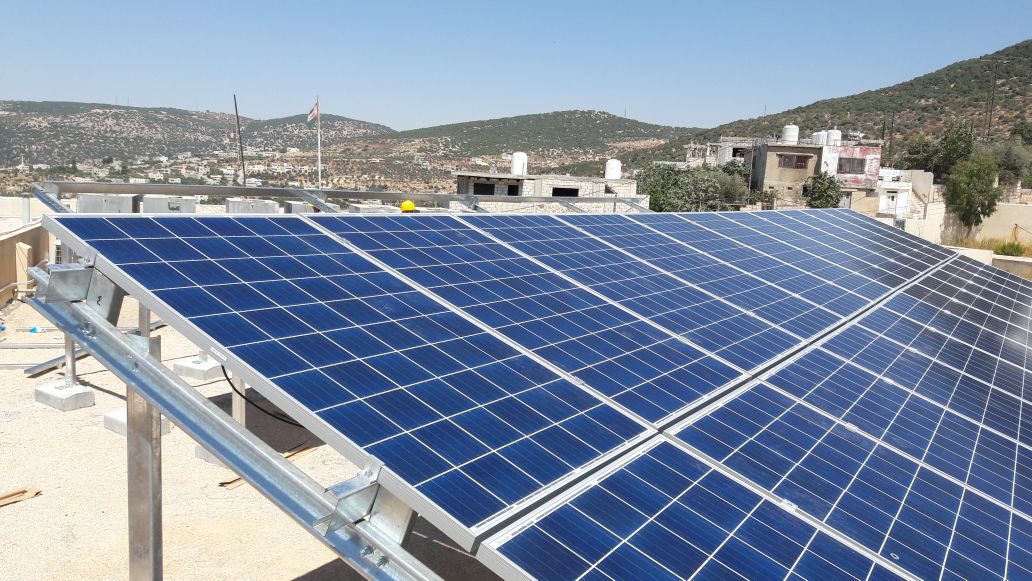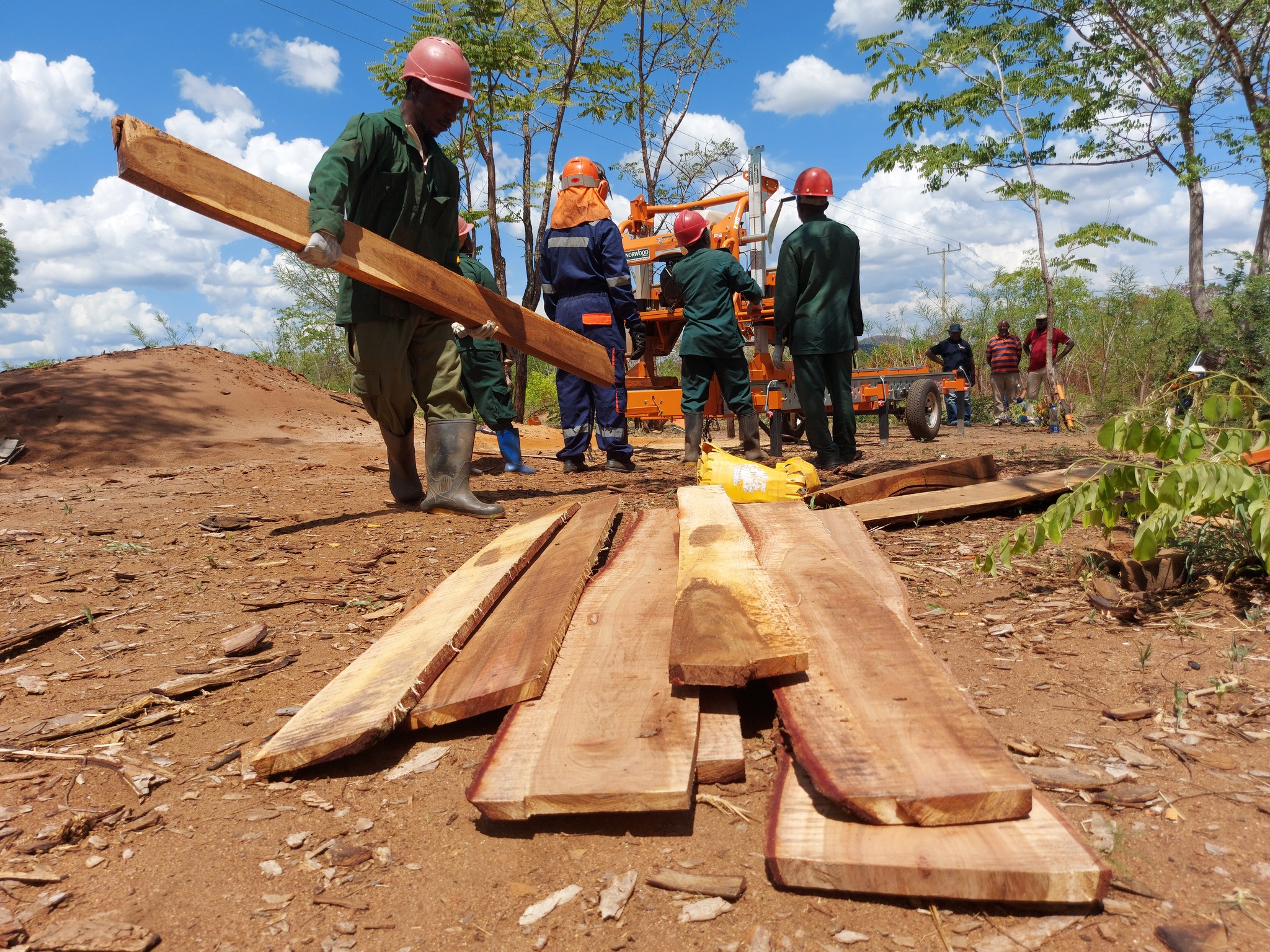
Investing in Climate Resilience
Introduction
For at least a decade, the international development community has accepted that climate change poses a major risk to economic growth and prosperity. The evidence is also well established that a more prosperous society is less vulnerable to climate change while countries depending on agriculture (often the least economically developed) are highly vulnerable to the negative impacts of climate change. Importantly, climate change impacts are not equally distributed across society, as those with the least capacity to cope and adapt are the most vulnerable. Women and girls often face the brunt of climate change impacts, which can exacerbate disparities between men and women in terms of poverty, labour, and access to resources. As climate change has found its place on the international development agenda, including Canada’s own feminist International Assistance Policy, as a priority area for action and investment, emphasis should be placed on how to best harness women’s leadership in advancing mitigation and adaptation outcomes. As government policy-makers and development practitioners look towards future development programming in the context of Canada’s new International Assistance Policy, this paper serves to reinforce the case for investing substantially in the environment and climate action.
Just the Facts
Climate Change is a Development Problem
Climate change undermines the core mission of international development programs: to end poverty and increase economic growth in a sustainable way. How can mitigation and adaptation to climate change align with Canada’s new International Assistance Policy in order to make the best use of our scarce development resources? How can plans, policies, and programs support the most vulnerable countries adapt to climate change, and ensure that action serves the most vulnerable in society, including women and girls? We can do this by looking at how climate change deferentially impacts the most vulnerable in the developing world.
- Ninety percent of climate change impacts are felt through the hydro-sphere (all the waters on the earth’s surface), creating water resources insecurity. The most economically vulnerable communities are agriculture dependent, in which changes to rainfall patterns, river hydrogeology, drought, ocean acidification, and warmer temperatures all contribute to increasing food insecurity and health concerns for millions of people.
- For every 1°C rise in global temperatures, grain yields decline by about 5% – maize, wheat and other major crops experience significant yield reductions. Greenhouse Gases (GHGs) create ecosystem changes and areas are now warmer, cooler, dryer or wetter than before, stressing crops, changing native plant/forestry growth, and disrupting migrating species.
- Rising sea levels lead to deteriorating coastal conditions which affect tourism, infrastructure, agriculture, fresh water supplies (saline intrusion) and increase flood risks. Rising temperatures favour agricultural pests and disease, stressing already weakened crops and threatening health, livelihoods and economic activity
- Frequent and more intense climate-related extreme weather events such as heat waves, floods, droughts and more powerful storms heighten the exposure of communities to disasters. Impacts range from physical, human and economic losses, increased food insecurity, environmental degradation, loss of biodiversity, and the displacement and loss of livelihoods. Impacts, in turn, exacerbate existing vulnerabilities and socio-economic tensions. Extreme weather events can also disrupt power, water, transportation and communications infrastructure, with indirect impacts on people’s livelihoods and health. In most cases, poorer communities do not have the resources, infrastructure, or know-how to anticipate or rebound from environmental disasters.
- Gender analysis of climate change highlights the different vulnerabilities of men and women, and boys and girls based on their differential level of exposure, sensitivity, and ability to cope and adapt to impacts. Women and girls are among the most vulnerable groups to climate change due to higher rates of poverty, lower levels of literacy, and the gendered division of labour. Discriminatory practices that undermine women’s decision making power over household and public resources in turn limit their ability to cope and adapt to impacts.
- Women are more likely than men to die during a disaster, and are highly susceptible to experience sexual and other forms of harassment and abuse in its aftermath. In addition, women’s socio-economic marginalization and lack of property rights leaves them with few resources to rebuild their lives, therefore perpetuating the cycle of poverty of women, and their vulnerability to climate and non-climatic stress.
- Expectations associated with women’s household responsibilities places heavier workloads on women and girls than male counterparts. Women often face a double burden of labour, responsible for the bulk of domestic work for running a household, including childcare, water, food, and energy, in addition to engaging in market opportunities. Climate change can reinforce gender inequalities by making domestic duties more time consuming and difficult. For example, increased droughts leads women and girls to spend more time fetching water, which can result in decreased access to education for girls.
In light of the differential vulnerabilities faced by men and women, it is important that international development assistance ensures that efforts are sensitive and responsive to the constraints faced by women and girls in responding to climate change. Canada’s Feminist International Assistance Policy provides an important first step to ensuring that women are at the forefront of efforts in mitigation and adaptation planning and action.
Cyclone Nargis
Cyclone Nargis made landfall on Myanmar’s Ayeyarwaddy delta in early May 2008. Approximately 84,000 people were killed; another 54,000 people went missing, while nearly 2.4 million people were affected. As a result of social and traditional norms that place the responsibility for children, sick, and elderly on females, women were disproportionately impacted by the disaster. For example, 61 percent of those who died were female.
Solutions through lessons learned
There has been demonstrated practical action implemented over the past decade that is accepted as helping build long term resilience to climate impacts. Canadian policy and programming can learn from and build upon the successes of past development initiatives.
These lessons have taught us the following:
- There is no one-size-fits-all approach, and consultation and engagement with affected people and communities will be necessary. Different adaptation and policy responses are required for different areas. Part of this is understanding the local context and local leadership. Understanding climate risks according to the local context is important to ensure that efforts support and strengthen the adaptive capacities of local populations. A successful example of this is a current Cowater project in Burkina Faso, supported by Global Affairs Canada, One Drop Foundation and iDE (France). This project addresses vulnerabilities related to water insecurity and will improve livelihoods through support to market gardening, livestock activities and microfinance, particularly for women. Improved water supply and sanitation infrastructure in the project area will positively impact an estimated 260,000 people, including 130,754 women and girls.
- Land use planning and water management must be considered in concert. Decisions on land use which affect drainage, infrastructure planning and energy costs related to water supply and treatment demonstrate how master planning can support disaster risk reduction, benefit food and energy security, and reduce health costs for water-related diseases.
- Poorly understood and insecure land use rights in developing countries can exacerbate threats posed by climate change insofar as deforestation can threaten ecosystems, biodiversity and livelihoods which rely on forestry products. This can have a significant economic and social cost to local communities. The World Bank funded Cities and Climate Change Project in Mozambique is an example of a coordinated effort to integrate climate related risks into land and urban environment planning and management. Cowater is building local capacity in 26 coastal municipalities to improve land management and generate revenue that can be channeled into appropriate climate adaptation measures through improved infrastructure and managed growth.
- Piecemeal approaches are not enough and global cooperation is needed in both mitigation and adaptation efforts. Multi-faceted approaches are required to identify adaptation options. For example, development projects working with climate adaptation in mind should aim to harness innovation in their project design with initiatives using renewable energy and resilient infrastructure (irrigation channels, water reservoirs) to combined benefits. Continental, broad-based initiatives, such as the work being led by the African Water Facility and the African Ministers’ Council on Water (AMCOW) on improving water sector monitoring and reporting systems since 2010, are key to generating data needed to plan and implement water sector policies and programs, maintaining critical social infrastructure, and managing climate change. Investing in resilience is key to ensuring that infrastructure development is sustainable over the long term.
- Evidence-based research that applies holistic socio-economic gender analysis is critical to inform policy and programming for mitigation and adaptation action. Interventions should recognize the differential vulnerabilities faced by women and men in society, and seek to address the underlying social factors limiting women’s engagement in resilience building efforts. Projects should make use of gender analysis and gender budgeting to ensure that climate related planning, policy making, and financing is sensitive and responsive to the challenges faced by women and girls. Targeted projects that encourage women’s leadership in environmental decision making and interventions that harness the business opportunities for women in renewable energy are especially important to advancing women led initiatives and enterprises in adaptation and mitigation efforts. An example of this is Cowater’s Sustainable Energy and Economic Development project in Jordan which will reduce energy emissions through increased use of solar energy while supporting women’s active engagement in the energy sector through income generating training, employment and business support, reducing gender inequalities in access to and control over resources and development benefits.
- Harnessing local leadership and building on the existing capacities of local institutions and civil society organizations is important to meet aid goals and develop long term adaptive measures. A project currently being implemented by UN-Habitat in Southern Lao PDR illustrates the role of local leadership in steering resilient strategies and encouraging economic growth. The project works with local communities and authorities to strengthen local capacity to develop infrastructure systems that are resilient to floods, storms, and landslides, while developing capacity at the national level to support local efforts.
Focused Action
Enabling vulnerable communities to better predict, manage and adapt to the risks posed by climate change will help meet Canadian and international development goals such as poverty alleviation, food security, economic growth, better health, clean water and sanitation, and gender equality. Focused investment is required and climate change development goals integrated into donor programs. Climate response and adaptation initiatives will help to protect vulnerable economies from future damage and help to build long-term resilience in each country. By building climate resilience into Canada’s development agenda, our government can work to mainstream climate considerations into their mandate, ultimately enabling at-risk populations to better predict, manage and adapt to the risks. With this context in mind, we propose the following courses of action in supporting the international adaptation agenda, while maintaining the focus of Canada’s development programming:
- Concentrate efforts on the sectors where Canada has a natural leadership capacity: water, food security and health.
- Ensure engagement of stakeholders at the local level with bottom-up approaches that will raise awareness, mobilize communities and present adaptation tools designed to foster sustainable environmental practices.
- Support women-led initiatives and women enterprises in harnessing business opportunities for adaptation and mitigation. This includes leveraging the role of women’s enterprises in the renewable energy sector to advance energy access and increase opportunities for low-carbon development.
- Support Canadian private sector initiatives internationally, not only on mitigation but specifically on adaptation, which tends to involve higher risks in terms of investment. This includes supporting firms engaging in GHGs through reforestation initiatives, development of climate resistant crops, and improving water stewardship globally.
- Support strong existing Canadian institutions, such as the International Development Research Center (IDRC) and the International Institute for Sustainable Development (IISD), to engage internationally on climate change, and to support collaborative efforts that foster knowledge sharing around climate data, prospective impacts, adaptation efforts and best practices.
- Create an enabling environment in benefit countries within business and government. Support projects that help governments improve their climate policies and foster economic growth through projects using renewable energy solutions, clean transport and land use policies that support sustainable and responsible management of natural resources. Work with local businesses by helping them build resilience into their operations and supply chains, reduce their carbon footprint, and invest in climate smart products and infrastructure.
Conclusion
Climate change is a global challenge that does not respect national borders and there is a cost to inaction. The longer the first world nations wait to address the world’s biggest challenges, the more expensive they become to solve. Risk assessment reports highlight that greater benefits are realized when adaptation activities are delivered in conjunction with other development activities. By mainstreaming green energy and climate smart initiatives into Canada’s development programs, we can work with low and middle-income countries to develop resources and infrastructure to better anticipate and rebound from the negative effects of climate change. Climate change presents enormous
challenges, and opportunities, for development, making it essential that climate and development be tackled in an integrated way.
As climate change becomes increasingly more pronounced on the world stage, Canada is in a position to lead by example in harnessing the potential of women and girls in driving actions for a more resilient and inclusive future. To fully deliver on Canada’s commitments, efforts should be made to ensure that actions leverage private sector investment, incorporate best practices, and support communities in developing locally appropriate solutions to respond to climate change.
Related Content
Tanzanian–Finnish collaboration supporting a ‘use it or lose it’ approach in Tanzanian Community Based Forest Management
The Governments of Tanzania and Finland have worked together in partnership for decades in the forestry sector in Tanzania. Since 2018, through the Forestry and Value Chains Development Programme (FORVAC), […]
The story of two interns: one year later and over 19,000 kilometers apart
Cover photo, from left to right, Cowater International former interns turned employees: Sofia, Samantha Julien (Sam), Aude, Elizabeth McGowan (Liz) and Astrid. Elizabeth McGowan (Liz) and Samantha Julien (Sam) both […]
Cowater International to participate in 11 EU External Action 2023 Framework Contract lots
Cowater International is delighted to announce that the European Union’s Directorate General for Intenational Partnerships recently signed the contracts related to the implementation of the Framework Contract Services for EU’s […]







